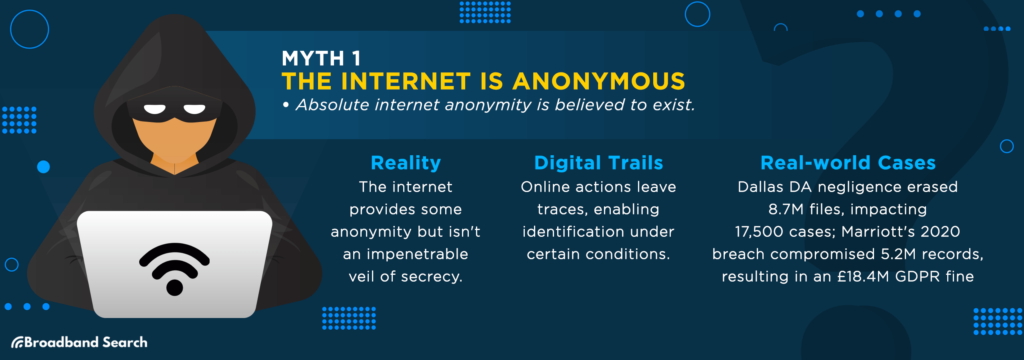When you’re running a small to medium-sized enterprise (SME), Internet connectivity isn’t something you want to leave to chance. But with so many terms and options flying around – fibre, broadband, latency, bandwidth – it’s easy to feel a bit lost. And on top of that, there’s no shortage of myths that can make choosing the right connection even more confusing.
Myth 1: Fibre Is Overkill for SMEs
Let’s get this one out of the way first – fibre broadband isn’t just for big companies with thousands of employees. There’s often a misconception that fibre is too advanced or expensive for smaller businesses, but that’s just not the case.
Fibre-optic Internet from Vorboss offers faster, more reliable connections because it transmits data via light, not electricity. That means less interference, and consistent performance even during peak times. This is a game-changer for any business that needs to upload large files, handle video conferencing, or work in the cloud (which, let’s face it, is pretty much everyone these days).
Here’s why fibre might be perfect for your SME:
- Speed – Fibre provides far higher speeds than traditional copper connections, allowing you to work more efficiently.
- Reliability – With fewer drops in performance during busy periods, fibre is ideal for companies that need a dependable connection.
- Scalability – As your business grows, so will your demand for faster Internet. Fibre can keep up with that growth.
- Cost-effectiveness – While the initial investment might seem high, in the long run, fibre can reduce costs associated with downtime and inefficiency.
- Future-proofing – Fibre networks are built for the future. As new technologies emerge, fibre connections will be able to handle them with ease.
If you’ve been holding back on fibre because you think it’s not for SMEs, it might be time to reconsider.
Myth 2: Faster Speeds Are All That Matter
Sure, everyone loves a fast Internet connection, but speed isn’t the only factor that determines the quality of your Internet experience. If you’ve ever been on a video call where everything looks crystal clear one second, and then pixelated and lagging the next, you know what I’m talking about.
This is where terms like latency and bandwidth come in. While speed measures how fast data can be downloaded or uploaded, latency measures how quickly data travels from its source to your device. Low latency means data moves quickly, which is crucial for real-time applications like video conferencing or VoIP calls.
On the other hand, bandwidth refers to the amount of data that can be transmitted at once. Even if you have fast speeds, limited bandwidth can slow things down when multiple users or devices are online at the same time.
To make the most of your Internet connection:
- Look for both speed and low latency to support real-time activities.
- Ensure adequate bandwidth to accommodate your business’s traffic, especially if you have multiple users online simultaneously.
- Consider the specific needs of your business. If you’re a digital marketing agency constantly uploading large files, your needs will differ from a local café primarily using POS systems and Wi-Fi for customers.
Myth 3: Wi-Fi Is Always the Best Choice
Wi-Fi is convenient, no question about it. But relying solely on a wireless connection for Internet Connectivity for SME your entire office can lead to frustrations, especially if you’re in a busy area or have a lot of devices competing for bandwidth.
Wired connections, like Ethernet, offer far more stability and security than Wi-Fi. They’re not affected by physical barriers like walls, nor do they suffer from interference caused by other wireless devices. For tasks that require constant, high-speed Internet (think file transfers, cloud backups, or video meetings), having at least some wired connections in place can make a huge difference.
That doesn’t mean Wi-Fi isn’t a great option for most tasks – just be mindful of its limitations. A hybrid approach, using both wired and wireless connections depending on the task, could give your business the best of both worlds.
Myth 4: All ISPs Are the Same
It might seem like Internet service providers (ISPs) are all offering the same thing – after all, it’s just Internet, right? But the reality is, not all ISPs are created equal. Differences in network infrastructure, customer support, and service guarantees can significantly impact your experience.
Key things to consider when choosing an ISP:
- Service level agreements (SLAs) – What kind of uptime guarantees does the provider offer? Will they compensate you for downtime?
- Customer support – How quickly can they resolve issues, and what kind of support options do they provide (24/7, chat, phone)?
- Local infrastructure – Does the ISP have a strong, reliable presence in your area, or are they piggybacking on other networks?
Doing a bit of homework here can save your business from headaches later on.
Myth 5: You Only Need One Connection
Here’s a scenario: your Internet goes down for an hour in the middle of a busy workday. What’s the impact? For most SMEs, it’s significant.
Having a backup connection is one way to avoid this. By having Internet Connectivity for SME a secondary connection, whether it’s another broadband line, a 4G/5G solution, or even satellite Internet, you can minimise downtime and keep things running smoothly even if your primary connection goes down.
This might seem like an unnecessary expense, but consider the cost of an hour or two of downtime. For many SMEs, having that backup connection is a small price to pay for peace of mind.
Rethinking Your Business Connectivity
The world of Internet connectivity can be confusing, but it’s not as complicated as it might seem. Understanding the truth behind these common myths can help you make informed decisions that keep your business running smoothly and efficiently.
Whether it’s switching to fibre, balancing speed with reliability, or ensuring you have a solid backup plan, a little bit of planning can go a long way in keeping your business connected and ready for whatever comes next.

